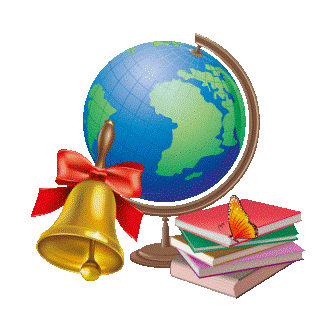Цели:
- Развитие навыков монологической и диалогической речи, чтения, аудирования;
- Активизация употребления изученной лексики по теме «Исчезающие животные»;
- Развитие логического мышления;
- Привитие интереса, любви к изучаемому языку.
Оборудование: выставка книг про животных, рисунки животных, рисунки учащихся, кроссворд, LCD проектор.
Ход урока
T: We live in a modern society. There are many factories, plants,
achievements, that pollute nature. Today we’ll talk about endangered
animals, ecological problems.
1. T: Which animals are in danger in the world?
P: Elephants, blue whales, dolphins, crocodiles, leopards, tigers, pandas.
T: Which animals are in danger in Tatarstan?
P: Ground squirrels, marmots, brown bears, swans, chipmunks, white owls, eagle- owls, woodpeckers.
2. Are these sentences true or false? Correct the wrong sentences.
1. The Arctic fox is hunted for its fur, which is brown in winter.
2. Hunters kill crocodiles for their skins.
3. Dolphins have a large brain.
4. Combs are made from tortoise shells.
5. The blue whale, which is the smallest animal in the world, weighs more than 200 tons.
6. Whales are hunted for their oil and meat.
3. T: Now let’s talk about animals. Why are they in danger? What can you say about elephants?
P1: Elephants are the largest animals in the world. They have big
ears, long trunks. They have tusks. People hunt and kill elephants for
their tusks. Ivory bracelets come from elephants.
Do you know that…?
Elephants have big tusks. One of their tusks is a half of meter and it weighs 500 kilos.
T: What can you say about marmots?
P2: Marmots are found in Tatarstan. They are brown. They are not
big, not small. They have brown short fur. They sleep in winter. People
kill them for their fur. Another problem is pollution. The water is
polluted.
T: Are squirrels in danger too?
P3: In our republic Tatarstan squirrels are in danger too. They are
small. Squirrels have long dark tails, long orange ears. They live in
the forest. People kill them for their fur. There are some ecological
problems too. Forests are cut down. The water is polluted. Animals are
hurt.
4. T: Open your books at p. 65. Now let’s listen and read about crocodiles and pandas.
Listen and find out. Where do these words go?
- which are eaten in some parts of the world
- which are made into beautiful belts, shoes and bags
- which only live in China
- which is the largest reptile
- which looks like a bear
The crocodile, _______, is very fierce. Crocodiles lay eggs, _____.
People also hunt them for their skins, ____. The Nile and American
crocodiles are disappearing.
The giant panda, _____, has white fur with black circles around its
eyes. Pandas, ____, eat bamboo. People cut down the bamboo forests for
wood. They also kill pandas for their fur. So the giant panda is in
danger.
Read about crocodiles.
Read about pandas.
5. T: Now imagine that you are at the library. One of you is looking for information about endangered animals.
Make up a dialogue.
P1: Hi!
P2: Hello!
P1: What are you doing here?
P2: I am looking for a material about endangered animals.
P1: There is Red Book, where you can find endangered animals, plants, insects of our republic.
P2: Let’s have a look. Is there information about ground squirrels?
P1: Yes, look it is nice. It is brown. It has white spots. They
sleep in winter. They live on mountain areas. They are in danger
because people use a lot of chemicals. Children destroy their homes and
kill their babies.
P2: Thank you.
6. T: If we are not worried about the Earth, some ecological problems appear. What are these problems?
P1: The water is polluted.
P2: Forests are cut down.
P3: Animals are hurt.
P4: Litter is thrown away.
P5: Trees are painted.
P6: The air is polluted.
P7: Baby trees are damaged.
T: Because of these problems some birds and animals were extinct.
Do you know any of them?
P1: The dodo.
P2: The reindeer used to live in Tatarstan. It used to live in
Mamadysh forest. In 1920 people saw this animal for the last time.
People hunted reindeers for their meat and skin. Reindeers are big and
strong animals.
7. Now have a rest. Let’s guess a puzzle.
"Do you know animals?”
- A very big animal.
- A very intelligent animal.
- A long animal.
- It lives in Arctic.
- It has horn.
- It has stripes.
- It has spots.
- It has a shell and lives on the land.
- It has a shell and lives in the sea.
- It only lives in China.
8. T: In our country there are a lot of people who think about the
future of the planet. Some people take care of animals, others take
care of birds, and others are in charge of forests.
How do you help the Earth? What should we do in order to safe our planet from danger?
P1: We should plant trees.
P2: We should collect paper.
P3: We should feed birds and animals.
P4: We should collect bottles.
9. T: It is very important for people to be friends of the animals.
What posters would you like to put near the forests, rivers?
- T: Thank you. I hope you will be kind and clever girls and boys.
And you will help the Earth and protect nature. You will take care of
wild and domestic animals. The future of our generation is in your
hands. You and only you are responsible for it.
T: Children, you were brilliant today. Thank you for the lesson.
|  З В О Н О К НА У Р О К
З В О Н О К НА У Р О К З В О Н О К НА У Р О К
З В О Н О К НА У Р О К